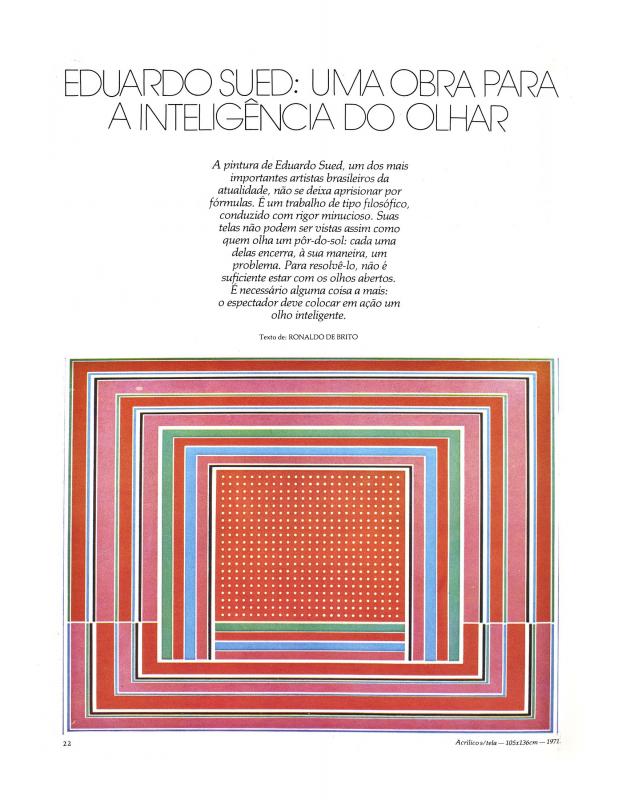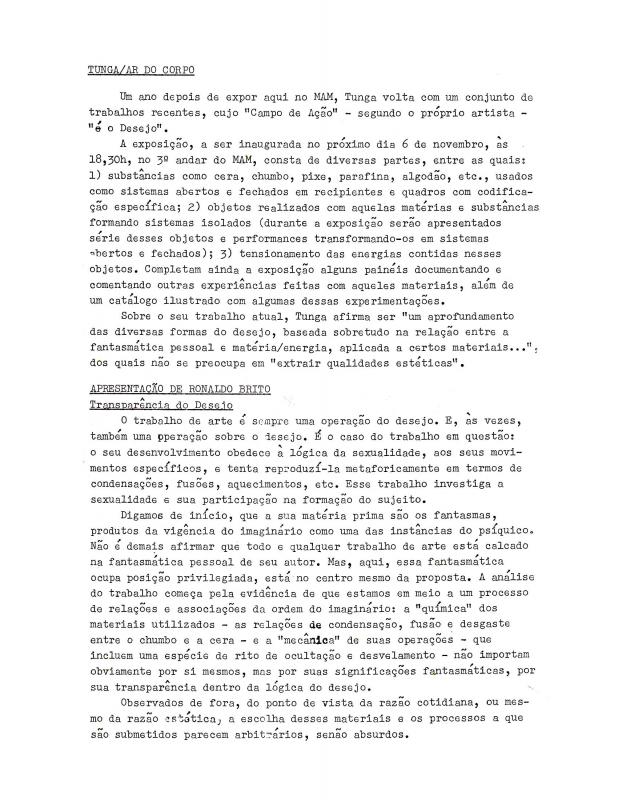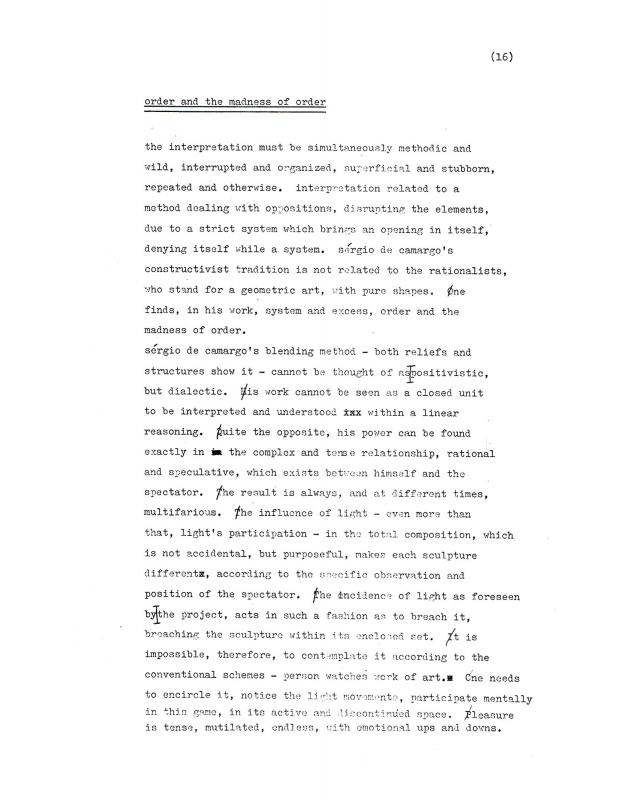Brito’s analysis of the works of Eduardo Sued (b. 1925) and Jorge Guinle Filho (1947–87) introduces an alternative reading of the paintings that prevailed in the 1980s. The work of both Sued and Guinle was far from the main trend of that decade, called the “return to painting.”
Working in Rio de Janeiro, Jorge Guinle was one of the members of what was known as the “Geração 80,” although he subsequently headed down his own independent path. Beyond the scope of his painting, Guinle was also distinguished by his intellectual contribution as an art critic.
Eduardo Sued, in turn, began his life as an artist in the 1950s. It was not until the paintings he created in the late 1970s, however, that he began to use color and structure on rigorously flat surfaces and came to be recognized in Brazil for the artist he was. Brito’s lively interest in Sued’s work led him to write other critical articles about it, such as “Eduardo Sued: uma obra para a inteligência do olhar” [doc. no. 1111077].
Ronaldo [Correia de] Brito (b. 1951), from the State of Ceará, is one of the most important and influential art critics working in the Brazilian art world. He has published his essays in books, magazines and exhibition catalogues, and he was also a contributor to the newspaper Opinião as well as one of the founders of the journals Malasartes and Gávea. During the 1970s, he was one of the leading voices promoting the reevaluation of the Neo-Concrete movement and its legacy in the contemporary art of Brazil.
Among Brito’s extensive writings, there is a piece on Neo-Concrete art [doc. no. 1091308], as well as texts on other artists he finds interesting, including Tunga [doc. no. 1110561], Amilcar de Castro [doc. no. 1111306], Sérgio Camargo [doc. no. 1110496], and Umberto Costa Barros [doc. no. 1110616].






